BBC Scotland Hacked: 8 Steps to Protect Your X Account
BBC Scotland Hacked: 8 Steps to Protect Your X Account
Cybercriminals are constantly looking for ways to take over accounts to run scams and make a profit. From small businesses to major broadcasting networks, no one is immune to these attacks.
What happened to BBC Scotland's X account shows this threat is real and ongoing. We'll cover what happened during the breach, why even dormant accounts remain vulnerable, and the specific steps your organization can take to protect its social media presence from similar attacks.
What Happened To BBC Scotland's X Account?
BBC Scotland's X account was hacked on October 13. The breach began around 11 p.m. and targeted the broadcaster's old politics account, @BBCScotPolitics, which hadn't been active in years.

Around 20 posts were shared during the hack, all promoting a so-called "Monad Airdrop" and encouraging followers to join a crypto stock "launch event." Some posts tagged other accounts, while others carried odd captions like "proud moment" and "Incredible to see 150k 100 strong, Bless. Stronger together always."
What’s interesting is that the account had actually been shut down back in May 2021, when the BBC announced that its political coverage would move to @BBCScotlandNews and @BBCPolitics instead. A pinned post from that time read, "This social media account has now closed. Follow @BBCScotlandNews and @BBCPolitics for the latest." But even though it's no longer being used, the page is still visible, still linked to the official BBC Scotland News website, and followed by more than 8,000 users.
Soon after, BBC Scotland confirmed that the account had been compromised. A spokesperson said, "We're aware that an old BBC Scotland Politics X account, which has been inactive since 2021, appears to have been compromised. We're looking into the matter."
The issue now seems to be resolved, as all the posts have been removed from the account.
How Can Brands Protect Their X Accounts From Account Takeovers?
Organizations have to keep up with all the tactics hackers use. It's like a constant game of cat and mouse, where you have to stay one step ahead to protect your accounts. However, at the end of the day, protecting them revolves around adding as many layers of protections as possible, reducing your attack surface, and applying principles of least privilege.
Here’s how to do just that:
1) Create A Unique, Strong Password For Your Account
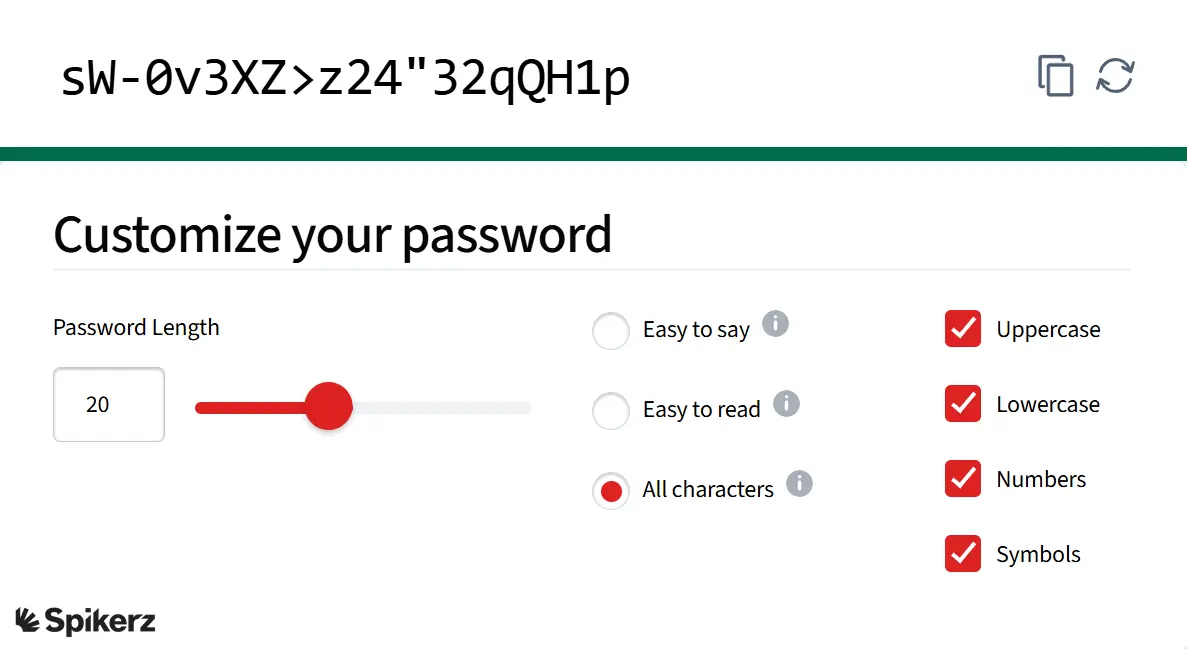
Strong, unique passwords are your first and most important first line of defense against account takeovers. They help you prevent unauthorized access, keep your personal and financial information secure, and reduce the risk of identity theft or data breaches. It also makes it much harder for hackers to guess or crack your credentials using brute-force attacks.
Weak or reused passwords, on the other hand, make it easy for hackers to get in. That’s why to protect yourself, you must avoid using personal details like your name, birthday, or pet's name in your passwords.
A strong password should be ideally around 20 characters long and include a mix of uppercase and lowercase letters, numbers, and special characters like RjCprY*dwdJUP$V0#q$W. And each account should have its own unique password so a single breach doesn't spread across multiple platforms.
If it’s hard for you to keep track of all your passwords, use a password manager. It can safely store them, generate strong ones for new accounts, and automatically fill them in when you log in.
2) Enable Multi-Factor Authentication (MFA) On All Accounts
Enable multi-factor authentication (MFA) on all your accounts to strengthen your security and protect your personal data. MFA adds extra defense against cyber threats like account takeovers, data breaches, and identity theft by requiring more than just a password. That way, even if someone gets access to your password, MFA prevents them from logging.
To enable two-factor authentication (2FA), a form of MFA, make sure you have a confirmed email address linked to your profile. This helps X communicate with you and keep your account secure.
X supports three 2FA methods: text message (SMS), an authentication app, and a physical security key. But, just to keep in mind, SMS-based 2FA is only available to premium subscribers and it's not ideal for security.
Here's how you can enable two-factor authentication (2FA) on your X account:
- Open the X app or visit X.com and log in with your username and password.
- On mobile, tap your profile icon in the top-left corner and go to "Settings and Support" > "Settings and privacy." On the web, click "More" in the left sidebar and then select "Settings and privacy."
- Go to "Security and account access" > "Security."
- Select "Two-factor authentication" to see your options.
- Choose the "Authentication app" option and tap or click "Get started." If you see "Text message" and are not a premium subscriber, it won't be available.
- Download an authenticator app like Google Authenticator, Authy, or Microsoft Authenticator if you don't already have one.
- Scan the QR code that appears on X using your authenticator app. If you can't scan it, choose "Can't scan QR code?" to enter a manual key instead.
- Your app will generate a 6-digit code. Enter this code into X and click or tap "Confirm."
- You'll then receive a single-use backup code. Save it somewhere secure, like a password manager, in case you lose access to your app.
- Once complete, 2FA will be enabled. The next time you log in, you'll need both your password and the verification code from your authenticator app.
3) Securely Store Your Backup Codes
When you enable two-factor authentication (2FA) on X using an authenticator app, a set of backup codes is automatically generated for you. The codes are essential because they allow you to access your account if you ever lose your phone, change your number, or can't open your authenticator app.
Make sure you write these backup codes down or take a screenshot and store it somewhere safe. Never save them online or in a cloud folder. Keep them offline, ideally in a password manager or even on paper where no one but you can see them. Once you turn on 2FA through the iOS or Android X app, you'll get one backup code automatically. You can also generate additional ones anytime on X.com.
To generate a new backup code, open your X app and…
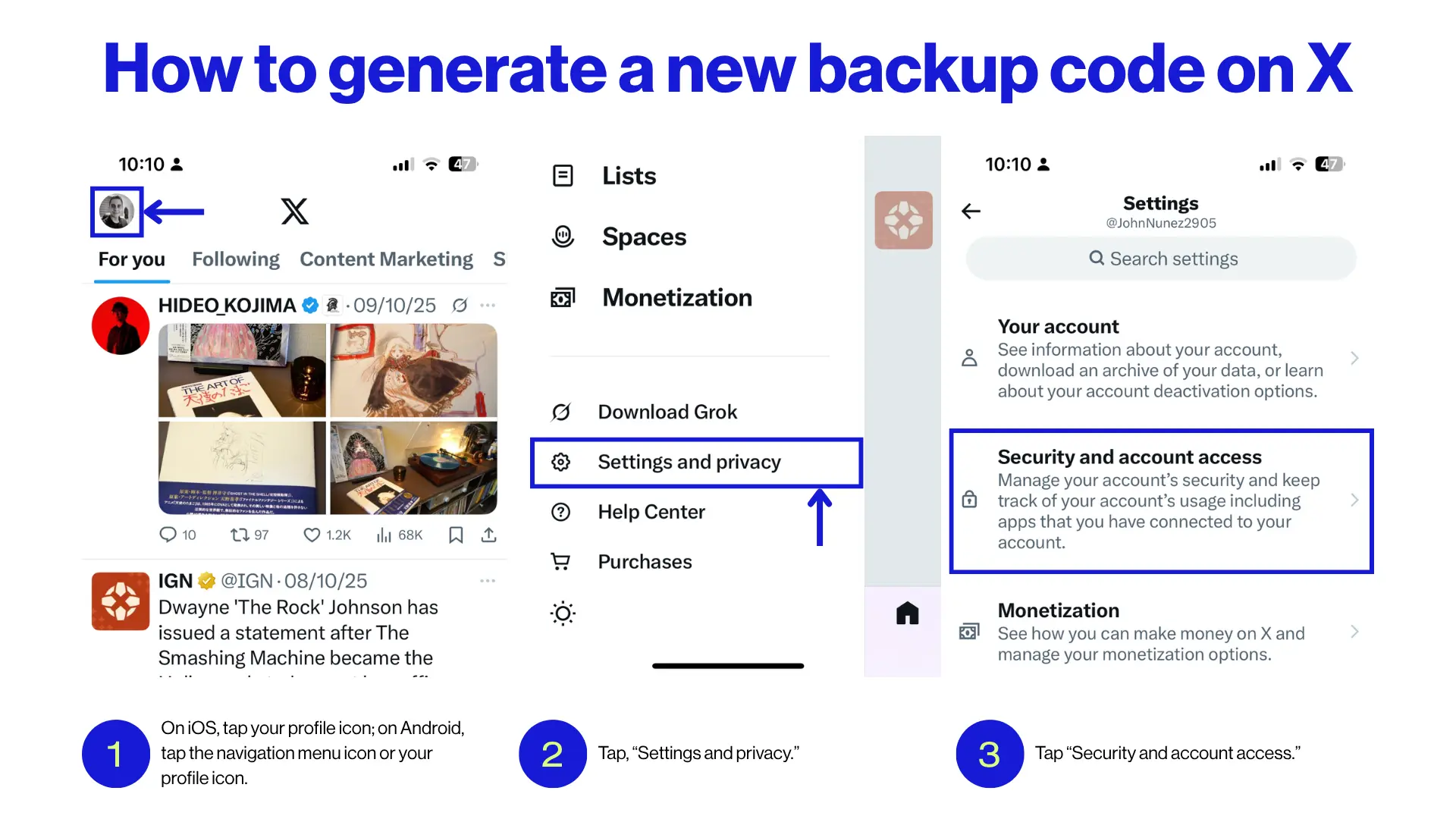
- On iOS, tap your profile icon; on Android, tap the navigation menu icon or your profile icon.
- Tap, “Settings and privacy.”
- Tap “Security and account access.”
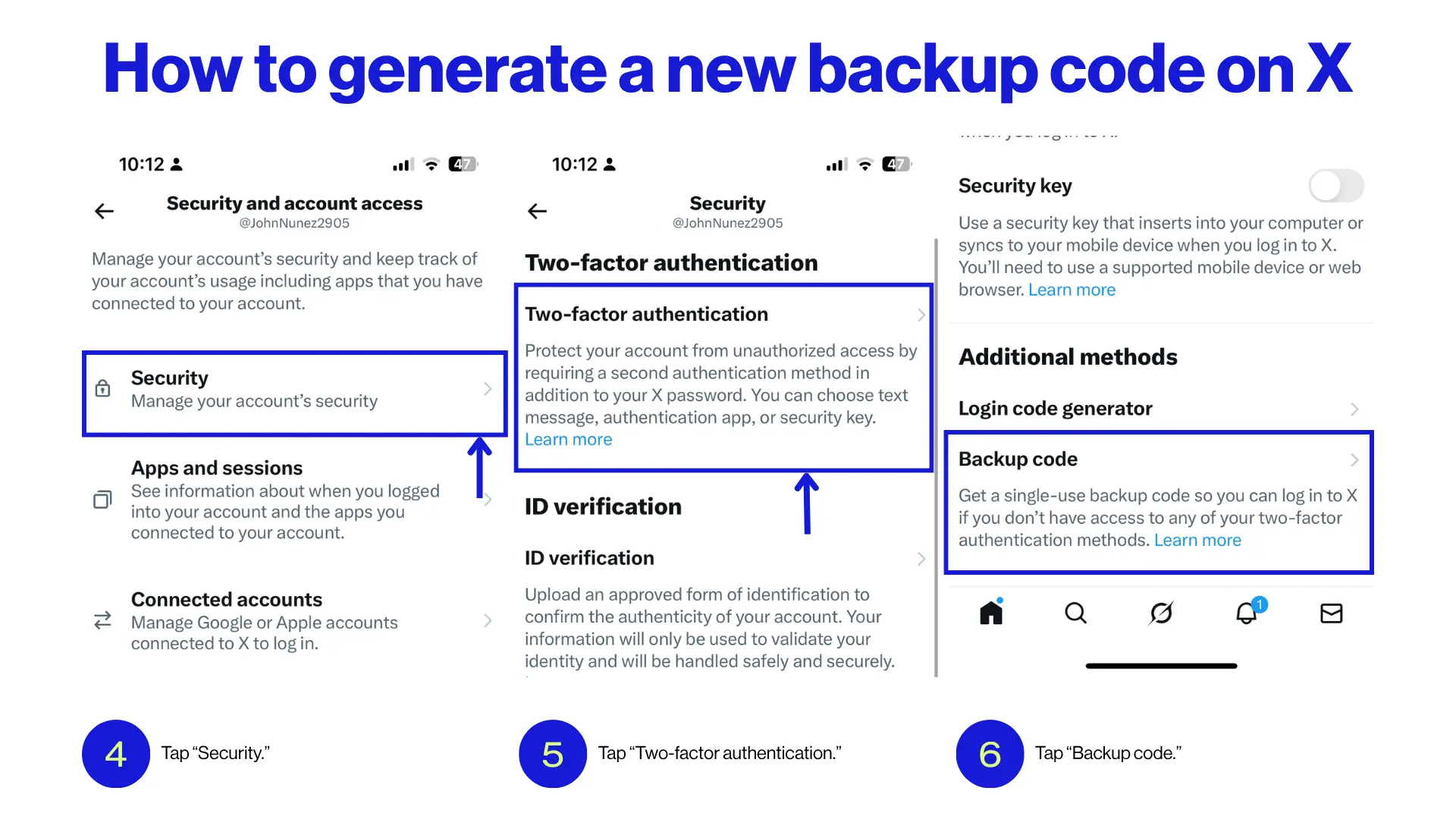
- Tap “Security.”
- Tap “Two-factor authentication.”
- Tap “Backup code.”
- Lastly, tap “Generate a new code.”
You can only generate one active backup code at a time, so make sure to generate a new one after using it.
If you need to use a backup code, log in with your usual username and password. When the two-factor authentication screen appears, click the link to enter your backup code and type it in. That's it. Just remember that backup codes are not the same as temporary passwords, and they're unique to each platform.
Lastly, avoid using your phone number for 2FA because it's less secure. Change your password regularly (ideally, every 6 months or so), and after every change, note down your new backup codes. Set reminders on your phone to update your credentials and check your security settings. If you lose your backup codes and didn't store them offline, even platform support won't be able to help you regain access.
4) Regularly Train Employees On Cybersecurity Best Practices
Regular cybersecurity training is essential because people are often the weakest link in any security strategy. The Verizon 2021 Data Breach Investigations Report found that 85% of the 5,258 breaches analyzed involved a human element. Phishing alone showed up in 38% of those cases, making it the most common type of threat. And even with advanced security tools in place, the statistics show that human behavior is still a major factor in keeping data safe.
Employees are a risk not because they're careless, but because modern work environments demand flexibility and constant connectivity. They use many different apps, share large amounts of information, and need quick access to data to stay productive. The flexibility is great for getting things done, but it also makes it easier for mistakes to happen or for someone to fall for a phishing attempt.
That's why regular training makes such a difference. When employees understand how to spot suspicious links, recognize social engineering tactics, and follow cybersecurity best practices, they're much less likely to make mistakes. So a clear and engaging training program helps people stay alert and confident in protecting sensitive information, creating a more secure workplace.
5) Monitor For Suspicious Activity And Unusual Login Patterns
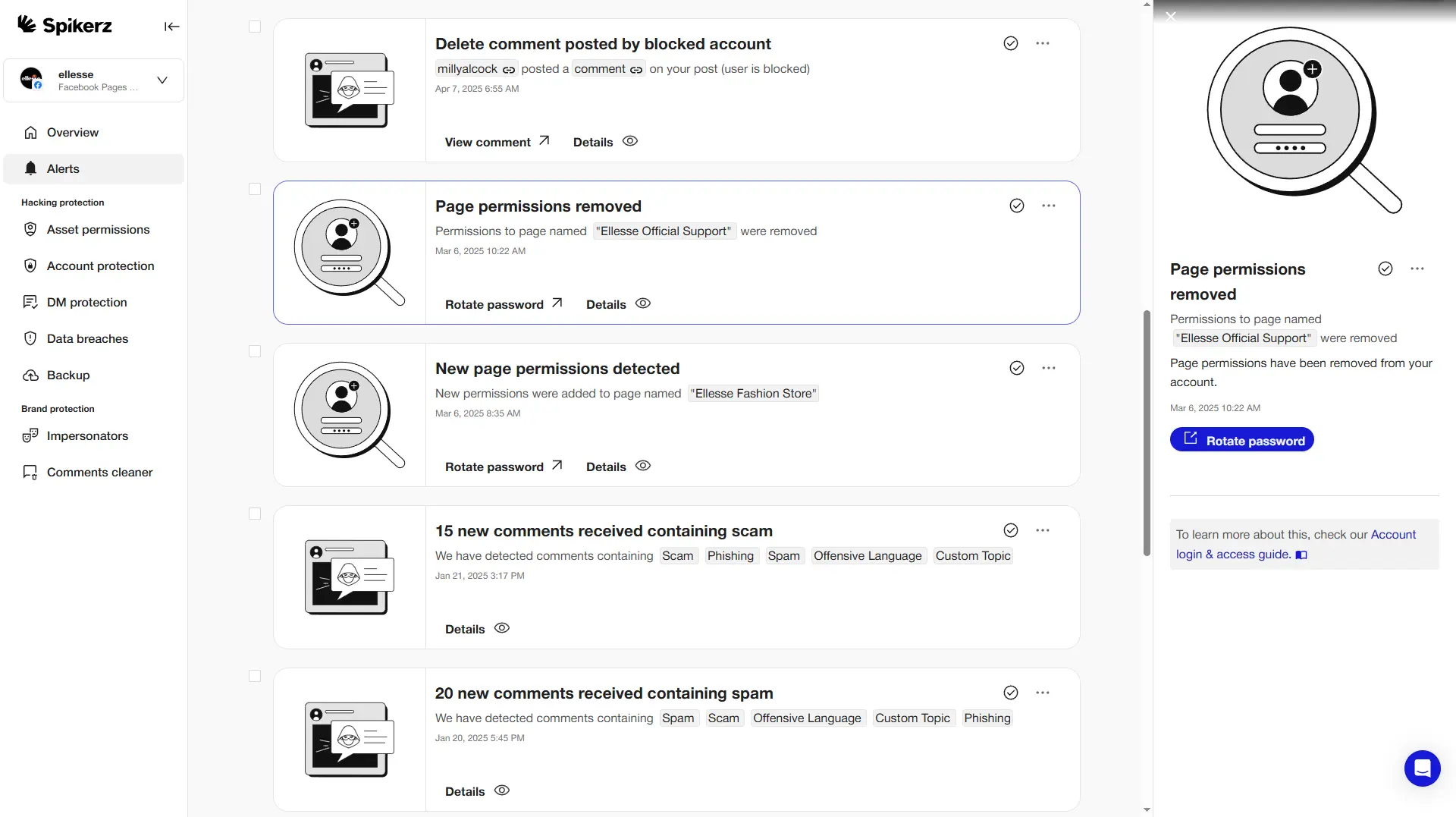
Monitoring your social media accounts for suspicious activity is key. Hackers often target social media to spread scams, steal information, and damage reputations. Keeping an eye on unusual login patterns and unexpected behavior helps you stop problems before they become big issues.
Behavioral analytics play an important role in spotting these problems. It identifies abnormal patterns that may signal fraud, hacking attempts, or data breaches. When you know what normal activity looks like, you can detect changes quickly and take action before anything happens.
The benefits are clear. Behavioral analytics allows proactive monitoring to detect risks early, continuous adaptation to threats, and insider threat detection to catch suspicious activity even from trusted users.
A complete social media security strategy should include strong passwords, malware protection, regular account reviews, user training, and clear response plans. Prevention is always better than recovery, and consistency is the key to keeping your accounts secure.
Spikerz makes this process simple. It gives you the tools to monitor your social media accounts for suspicious activity, track unusual login patterns, and detect compromised accounts. By taking advantage of behavioral analytics, Spikerz continuously learns your account's typical behavior, helping you spot irregularities in real time. With its alerts and insights, you can take immediate action and keep your online presence safe, secure, and one step ahead.
6) Implement An Incident Response Plan To Quickly Address Any Potential Breaches
A Cyber Security Incident Response Plan is a written document that outlines how an organization will detect, respond to, and recover from potential security breaches or cyber threats. It defines clear roles, responsibilities, and procedures to protect the confidentiality, integrity, and availability of important information assets.
Having this plan in place is essential for safeguarding sensitive data, maintaining customer trust, and keeping business operations running smoothly. It also enables companies to act quickly during an incident, minimize damage, prevent data loss, and reduce financial impact.
7) Conduct Regular Security Audits And Penetration Testing
A cybersecurity audit is a structured review of your organization's security measures, policies, and procedures. It helps you identify weak spots in your systems and prevent data breaches.
Penetration testing is a simulated cyberattack on a system to find and exploit vulnerabilities before real attackers can.
As such, regular security audits and penetration testing go way beyond compliance. They help you understand your organization's specific cyber risk environment so you can build a clear roadmap to prioritize and reduce those risks.
Consistent audits also strengthen your overall security posture. They allow you to assess the effectiveness of your current security controls, ensure regulatory compliance, and adapt to emerging threats. Most importantly, they give you the confidence that your organization's data, systems, and online presence are well-protected against cyber risks.
8) Limit Access To Your X Accounts Based On The Principle Of Least Privilege
The principle of least privilege is about giving people or systems only the access they truly need to do their work. It helps reduce the risk of unauthorized access, data misuse, or accidental changes.
When this principle is applied to your social media, for example X accounts, it protects your business from unnecessary exposure. Too many people with access can increase the chances of mistakes, leaks, or security breaches.
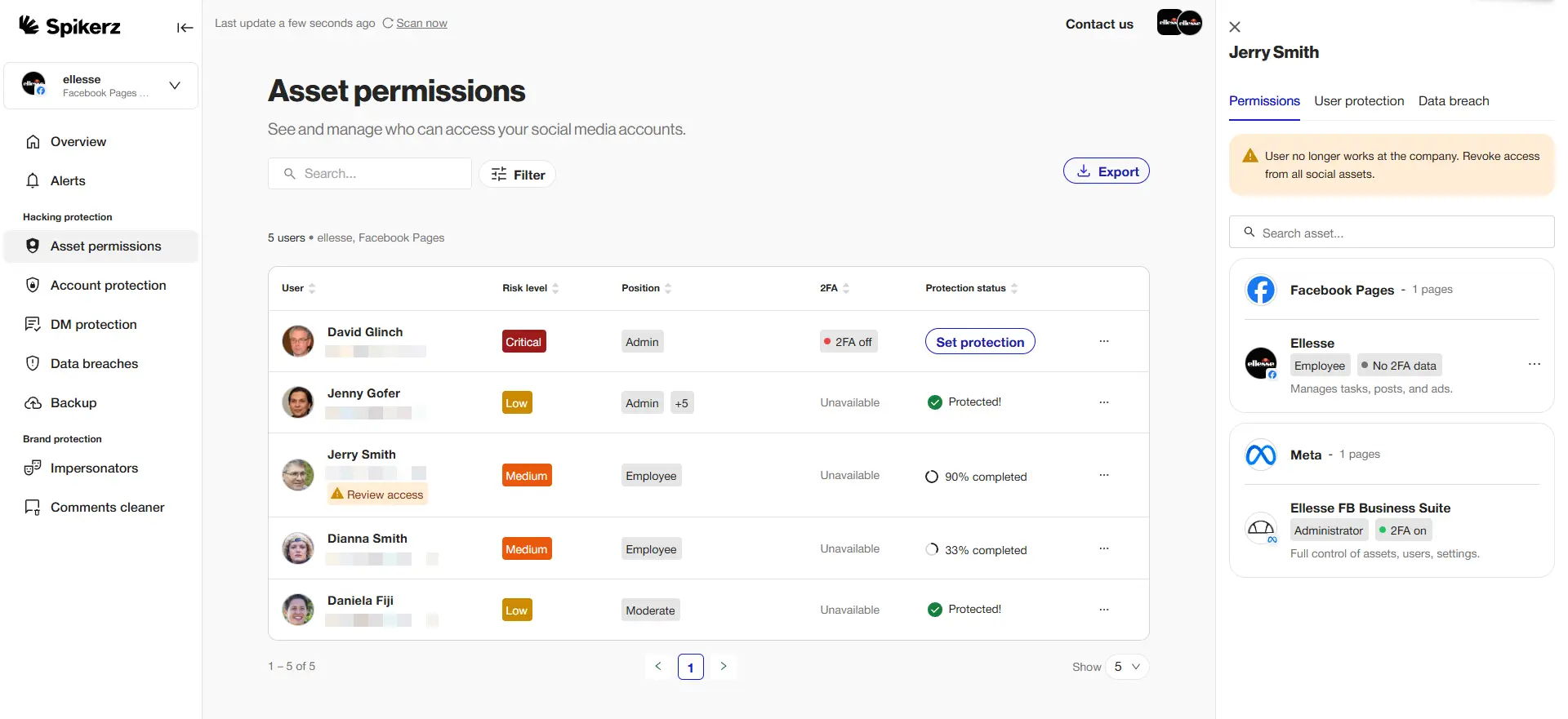
That said, access management isn't something you set up once and forget. As your team grows and roles shift, you need to regularly review who has control over your accounts.
The good news is, Spikerz makes that process simple. It lets you see exactly who and what has permission to your X accounts, helping you spot unnecessary or outdated access. And when someone leaves your organization or no longer needs access, you can revoke their permissions right away.
Conclusion
This breach serves as a warning that no account is too small or too inactive for hackers to target. Cybercriminals scan for weak points, and dormant accounts with outdated security measures are prime targets. Whether you're managing a major media brand or a growing business, your social media presence needs the same rigorous protection.
Thankfully, Spikerz gives you the tools to make this protection automatic. Our platform monitors your accounts 24/7, detects suspicious activity in real time, manages access permissions, and helps you respond quickly when threats emerge.
Don't wait for a breach to damage your reputation and cause you problems. Take control of your social media security and protect your brand before hackers strike.



